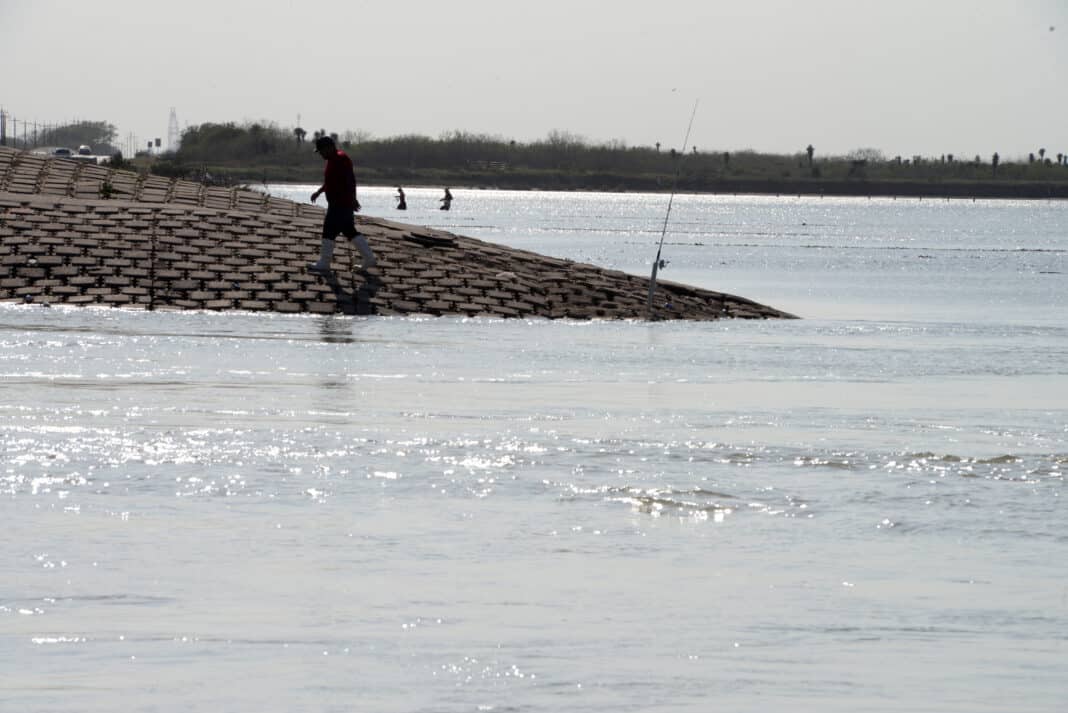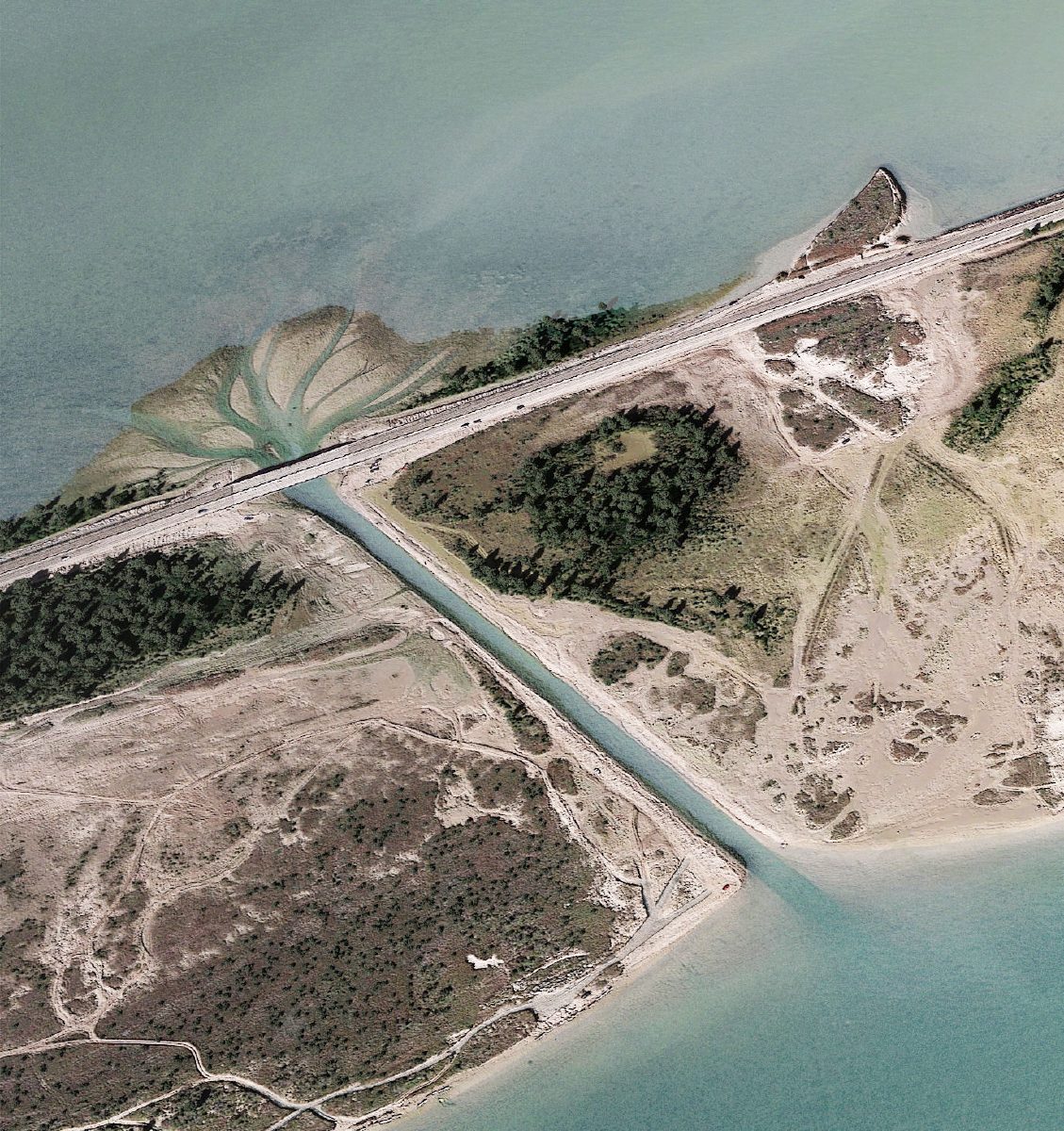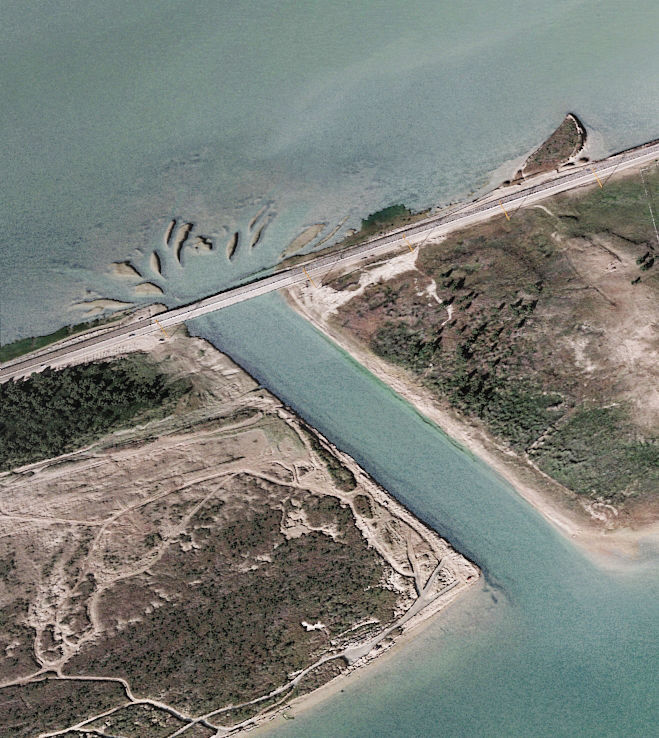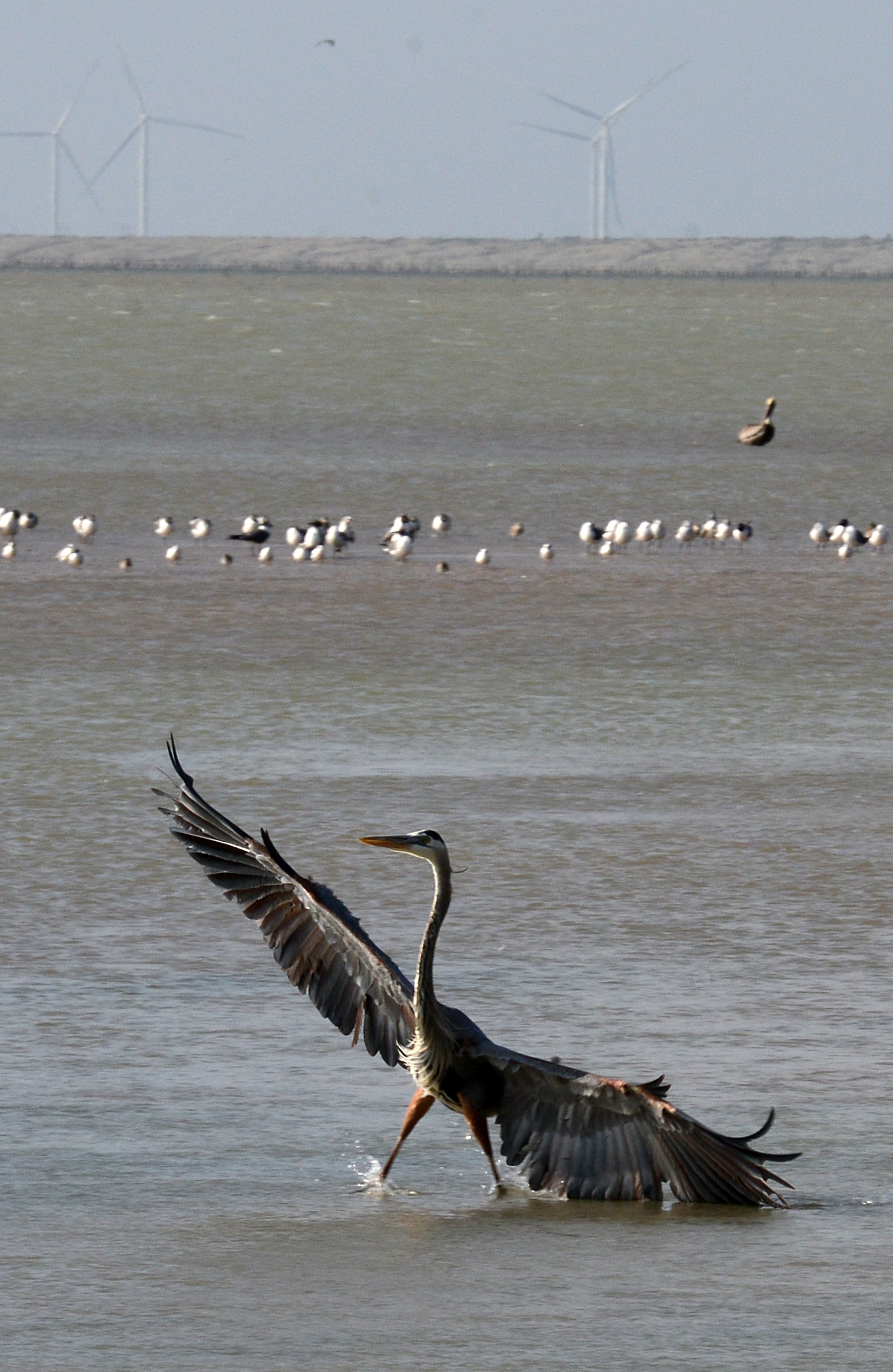The Carl “Joe” Gayman pilot channel that connects the Bahia Grande tidal basin with the Brownsville Ship Channel is undergoing a major upgrade, which will go a long way in restoring Bahia Grande to its former status as a major nursery and habitat for fish, waterfowl and other wildlife.
The channel will be widened from 34 to 250 feet and deepened to nine feet, allowing 13 times more water to flow into the basin during high tide, according to scientists. The waterway, which passes under S.H. 48 west of Port Isabel, was closed to the public on May 1 for the work to begin. The $5 million project is expected to be complete in early November.
The Bahia Grande Unit of the Laguna Atascosa National Wildlife Refuge is a 10,000-acre coastal ecosystem and wetland complex featuring three shallow basins just north of S.H. 48 and the ship channel.
The Texas General Land Office is driving the project, with proceeds from the Deepwater Horizon Natural Resource Damage Assessment, funded by billions of dollars in penalties against the companies responsible for the 2010 Deepwater Horizon oil spill. The GLO is leading the project on behalf of the Deepwater Horizon Texas Trustee Implementation Group, which includes the Texas Commission on Environmental Quality, Texas Parks and Wildlife, the National Oceanic and Atmospheric Administration and the U.S. Fish and Wildlife Service.
More than 65 federal, state and local agencies, schools and colleges, wildlife conservation and community groups are collaborating as members of the Bahia Grande Restoration Partnership to restore the natural resource, according to the Port of Brownsville, which is also part of the effort.
Port Director and CEO Eduardo Campirano said the port is glad to take part in the project to bring back the tidal basin and that it will “create greater recreational opportunities for our communities.”
“This brief interruption in water access is well worth the generations of benefit that will come from this significant endeavor,” he said.
Bahia Grande was a teeming wetland and habitat for wildlife until construction of the ship channel in the 1930s and S.H. 48 in the 1950s interrupted the natural flow of water from Laguna Madre, causing the tidal basin to dry up. The Gayman channel, named for a longtime commercial fisherman who for decades championed the restoration of Bahia Grande, was excavated in 2015.
Former Laguna Atascosa Refuge Manager Boyd Blihovde said in 2017 that widening the channel would return Bahia Grande to a less saline, more fully functional estuary.









